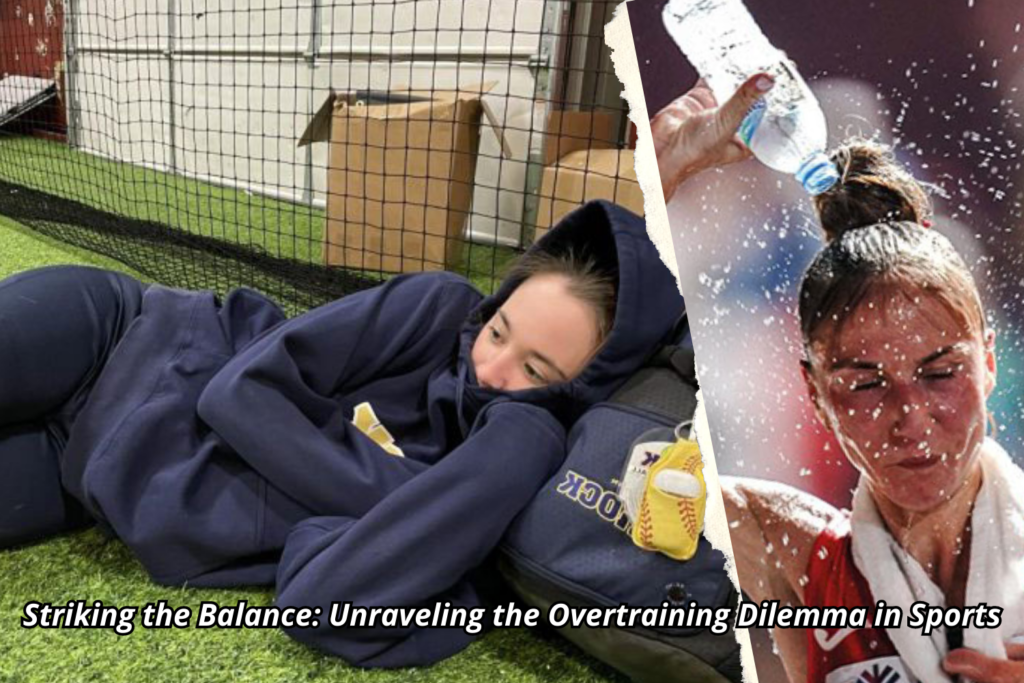
In the quest for athletic excellence, the line between pushing one’s limits and overtraining can sometimes blur. The age-old debate of whether game experience outweighs practice experience continues to intrigue coaches, athletes, and sports enthusiasts alike. This article delves into the world of sports, investigating whether players are prone to overtraining and whether real-game situations hold a superior edge over practice drills. We explore strategies to strike a balance between the two, ensuring optimal performance and longevity.

The Overtraining Conundrum
As the pursuit of greatness intensifies, athletes can inadvertently cross into the dangerous territory of overtraining. The allure of pushing physical and mental boundaries can lead to burnout, injuries, and diminishing returns. Overtraining not only impedes progress but also jeopardizes an athlete’s overall well-being. The desire to constantly improve, coupled with rigorous training regimens, can leave athletes fatigued and prone to physical and emotional exhaustion. Recognizing the signs of overtraining—such as decreased performance, irritability, and persistent fatigue—is crucial in maintaining a healthy training routine
The Value of Game Experience
While practice is undeniably essential, there’s an intangible quality to game experience that practice can’t fully replicate. Real-game situations introduce variables like crowd pressure, time constraints, and unpredictable opponents. These elements challenge athletes to think on their feet, adapt quickly, and strategize in dynamic environments. Game experience fosters mental resilience and hones decision-making skills under pressure. It also provides a tangible context for athletes to apply the skills and tactics they’ve practiced, reinforcing their training with real-time feedback.
Balancing Act: Best Practices
Striking the right balance between game experience and practice is a delicate art that demands thoughtful planning. Coaches and athletes must collaborate to create training programs that incorporate both elements seamlessly. Periodization, a structured approach that alternates between intense training and recovery phases, is crucial. This ensures that athletes have ample time to rest, recover, and recalibrate. Incorporating realistic scenarios in practice, such as simulating high-pressure situations, can bridge the gap between practice and actual games. Additionally, embracing technology like video analysis and performance tracking tools helps athletes refine their techniques and make data-driven improvements.
The Holistic Approach
The key to a successful athletic journey lies in adopting a holistic approach that combines the benefits of both game experience and practice. Recognizing the importance of recovery is paramount; rest is not a sign of weakness but an integral part of improvement. Coaches should prioritize quality over quantity in training sessions, focusing on deliberate practice that targets specific skills. Game experience should be valued not only for its competitive aspects but also for its contribution to mental fortitude and situational awareness.

The delicate dance between practice and game experience defines an athlete’s path to success. Striving for excellence is admirable, but maintaining a healthy balance is paramount. Overtraining lurks as a constant threat, while game experience offers invaluable insights and growth opportunities. Coaches, athletes, and sports organizations must navigate this terrain wisely, crafting training programs that merge the benefits of practice and the lessons of real-game situations. By doing so, athletes can harness their full potential, elevating their performance while safeguarding their well-being.
